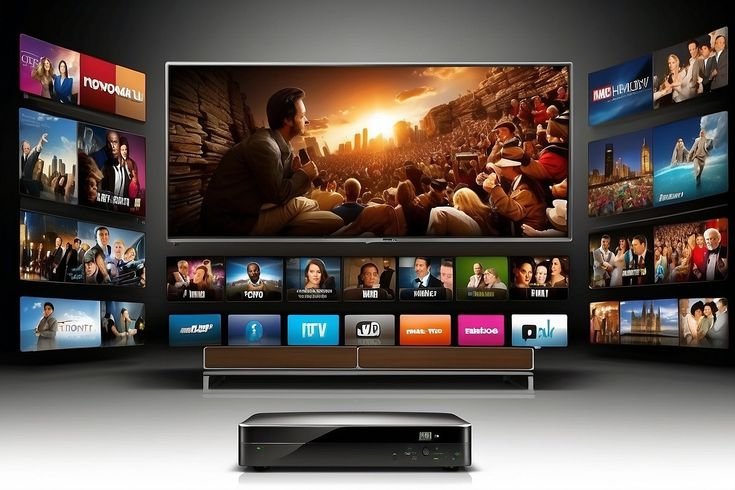Solution IPTV

With the advent of IPTV, which has changed the way people watch television and their favorite programs, it is the best time for viewers worldwide. Whether you choose IPTV, broadcaster streaming, or OTT, you can also say it’s the best time for both broadcasters and consumers. Broadcasting has come a long way since the popularity of cable television. Since then, the number of available channels has multiplied by hundreds. The availability of online content streaming has also increased dramatically. At that time, all customers were treated the same, and no one complained because there was no other option. At that time, the internet was not used to its full potential. Today, technology is evolving rapidly, and so is the content.
Why Choose an IPTV Solution?
IPTV has several advantages that cannot be overlooked. IPTV providers offer Internet television connections, which are superior and highly sought after for various reasons. The first advantage is that it offers millions of information channels to choose from. You are no longer forced to watch something you dislike. Whatever you want to watch, whether it’s digital video recording, video on demand, or personalized media sharing, you will always find something interesting. It’s a personalized TV experience for customers.
Providing bidirectional interactive communication, which means consumers can also use a telephone line and internet connection, is one of the most important features of IPTV. It allows viewers to have complete control over their entertainment and how they want to watch it. With new features such as video on demand services, instant channel switching, and much more, which can be done with a simple click. The level of comfort has risen, as has the level of entertainment. Viewers can watch high-definition television without interruption and with a wide variety. So, you can now watch a movie with a friend in another city while exchanging opinions and chatting at the same time.
The Future of IPTV
If current trends are any indication of the future of IPTV, we believe it is safe to say that this media content delivery sector will only continue to grow. People have seen the advantages of IPTV compared to traditional media broadcasting methods, and demand is expected to increase as more and more people “cut the cord.” It is estimated that one in five American households has completely abandoned cable or satellite and receives the majority of its media content through streaming and IPTV services.
Viewers can access a variety of television channels, movies, and on-demand shows using devices such as set-top boxes, Smart TVs, or even dedicated apps on smartphones. This technology has gained popularity due to its ability to offer a wide range of customized content tailored to individual preferences, thus transforming the television viewing experience. However, it is worth noting that IPTV also raises copyright and regulatory issues, which are subject to debate in the current media landscape.
IPTV has revolutionized the way consumers access and consume audiovisual content. By eliminating dependence on traditional broadcasting infrastructures, this technology offers increased flexibility in terms of programming and location. Users can now customize their viewing experience by choosing from a multitude of channels, on-demand services, and even interactive features.
Here’s a breakdown of how IPTV works:
Content Sources: IPTV services obtain TV channels and programs from various sources, including live broadcasts, on-demand content libraries, and video-on-demand services.
Content Encoding: The content is encoded into IP packets, typically using codecs like H.264 or H.265, to ensure efficient transmission over IP networks while maintaining quality.
Content Delivery: IPTV content is delivered to users via broadband internet connections, either through dedicated IPTV networks provided by telecom operators or through the public internet.
Middleware: IPTV services often use middleware platforms to manage content delivery, user authentication, billing, and interactive features like electronic program guides (EPGs) and video-on-demand (VOD) catalogs.
User Interface: Users access IPTV content through set-top boxes (STBs), smart TVs, computers, smartphones, or other compatible devices. The IPTV service provider’s user interface allows subscribers to browse channels, select programs, and access additional features.
Quality of Service (QoS): IPTV providers strive to maintain high-quality streaming experiences for users by optimizing network performance, minimizing buffering, and ensuring reliable delivery of content.
Subscription Models: IPTV services may offer subscription packages with different channel lineups, pricing plans, and optional add-ons. Some providers also offer free ad-supported content alongside premium subscription options.
Content Protection: To prevent unauthorized access and piracy, IPTV services implement encryption and digital rights management (DRM) technologies to secure content distribution and protect the rights of content owners.
solution iptv solution iptv solution iptv solution iptv solution iptv solution iptv solution iptv